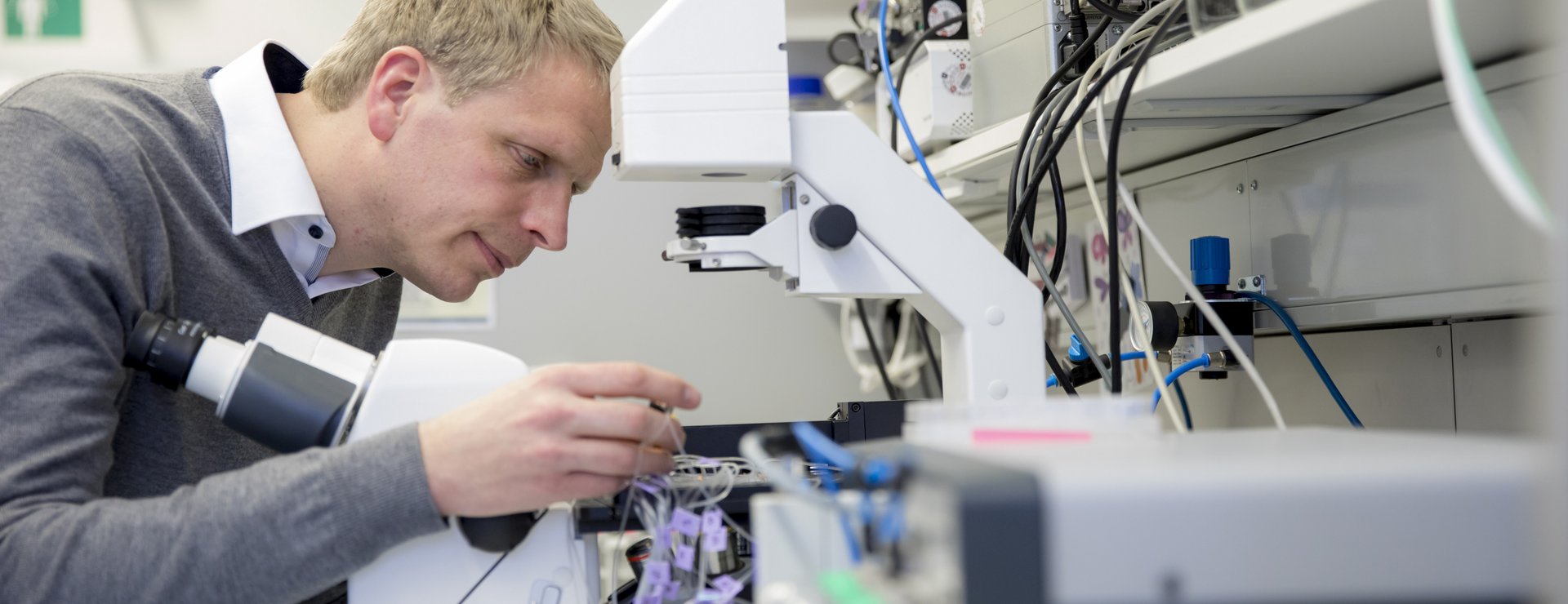
Adaptable Micro-Organ for Inaccessible Human Tissue
Predicting the therapeutic effects of newly discovered drug candidates in the human body is one of the biggest challenges in early drug development. Scientists need to replicate the complexity of human organs and tissues in models, that are suitable to use in the lab. Matthias Meier and his team at Helmholtz Munich now started a new project developing a unique model, the so called µLumen-Chip, specifically focusing on difficult to replicate human tissue and enabling an easy-to-use model for drug screening.
To date, humanized preclinical disease models promise to bridge the translational value creation gap in drug developmentthrough lower attrition rates, higher speed and cost-effectiveness. This is wherehuman organ-on-chip (OoCs) technologies come into play, simulating as detailed as possible the cellular composition and interactions in human tissues or organs in a laboratory model. OoCsare on the rise as enabling platforms for drug development and toxicology assessments since they can both recapitulate human (patho-)physiology and facilitate manipulation of dynamic cues. The increasing usage of OoCs in basic and translational research as well as substantial corporate investments confirm their robustness, commercial potential, and exponential growth opportunities.
µLUMEN-Chip, a validation project funded by the Initiative and Networking Fund of the Helmholtz association, builds upon the pioneering work of Matthias Meier’s lab towards production of pancreatic tissue, aiming to engineer a novel microfluidic OoC platform that on the one hand enables organotypic cell culture models in a lumen-based 3D hydrogel and on the other hand is applicable to a broad range of human epithelial tissues. The µLUMEN-Chip is unique and unprecedented in terms of scalability, physiological relevance, analytical performance as well as user experience. The project will focus on difficult to accesshuman tubular tissues, particularly targeting clinical areas that are lacking adequate models so far. Ultimately, µLUMEN-Chip is set to overcome the technological hurdles toward industrial production of the chip - a prerequisite for automated data acquisition to establish a µLUMEN screening and analysis platform.
Combining large-scale compound screens with tailored functional assays will challenge current drug development paradigms, overcome major obstacles and propel the compound development process to the next level. As such, μLUMEN-Chip will provide a much-needed solution for accelerated disease modelling of currently inaccessible human tissues and hence, add substantial value for customers both in pharmaceutical industry and academia.
About the scientist
Dr. Matthias Meier, Principal Investigator for Bioengineering and Microfluidics at the Helmholtz Pioneer Campus at Helmholtz Munich.
Contact: matthias.meier@helmholtz-munich.de
Background Helmholtz Validation Projects:
The mission of the Helmholtz Association is to contribute solutions to major societal challenges.
The overarching goal of the validation projects is to transfer ideas into application. The financial support enables Helmholtz scientists to validate their research results in order to achieve an increase in value and commercialization potential.






